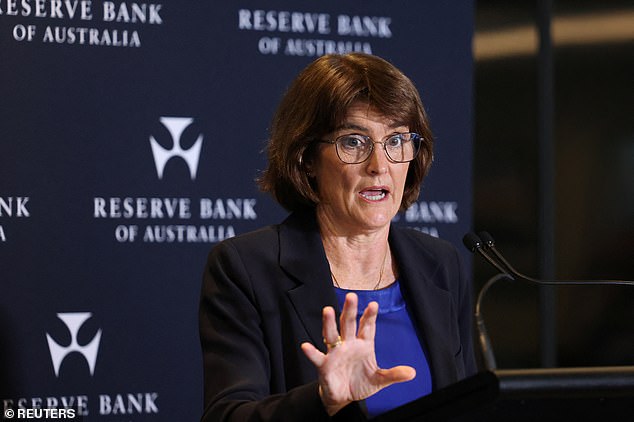Today’s Reserve Bank decision to keep rates on hold was inevitable. The economy has clearly reached its capacity limits, making the risk of higher inflation in the months ahead very real.
It would have been negligent of RBA Governor Michele Bullock to let rates fall further in such circumstances.
For years, state and federal governments have used energy rebates to help households deal with cost of living pressures. The measure has always been electorally popular, but it also had the effect of keeping measured inflation artificially lower than it otherwise would have been.
Now that many of those rebates have ended, inflation has unsurprisingly ticked back up again, just enough perhaps to keep the RBA wary of cutting too soon.
There are, of course, other factors behind today’s hold. Unemployment remains low (not a bad thing in itself) but if it were to fall much further, it would risk adding to inflationary pressures. The labour market remains tight, and recent industrial relations changes have pushed wages higher at the margins. It’s something the RBA watches closely.
The government, too, continues to spend beyond its means. Despite record-high tax revenues, Labor is spending more than it collects, fuelling deficits and adding to inflationary pressure. The latest budget update showed we’re back in the red, and the new round of election commitments following Labor’s May victory is only pushing debt and deficits higher from here.
Inflation is now sitting at the upper end of the RBA’s 2-3 percent target band. In such conditions the Bank was never likely to cut again so soon, not while unemployment remains low and spending growth is still too strong.
Some economists already believe the rate-cut cycle is effectively over after just three 0.25 percentage point reductions. Others think the next cut might not come until late 2026.

It would have been negligent of RBA Governor Michele Bullock to let rates fall further
The dozen rate rises since the 2022 election campaign finally ended in February this year when the RBA delivered its first cut, as inflation briefly came under control. Two further cuts this year offered mortgage holders some breathing room, but hopes of more relief before the end of the year, or early in the new year, now look increasingly remote.
Like it or not, Australians will need to adjust to a new normal: a cash rate of around 3.6 per cent. The record low interest rates of the pandemic era are not coming back any time soon.
And even if they did, it would only be because the economy had deteriorated to the point where the RBA was forced to stimulate growth via further rate cuts. That kind of downturn would almost certainly prompt the government to inject more fiscal stimulus, thereby adding further to the debt burden for future generations.
The other side effects of slowing growth are familiar and unpleasant: rising unemployment, forced property sales and a nervous public debate about immigration. All are likely to resurface as political flashpoints by the time of the next federal election. The immigration debate in particular is hotting up.
While today’s decision to keep rates on hold will disappoint many mortgage holders, self funded retirees will welcome it. A higher cash rate means better returns on their savings, one of the few silver linings in a period defined by monetary restraint.
Share or comment on this article:
Aussies are going to have to get used to the fact record low interest rates are NOT coming back. Today we got an undeniable sign of that: PETER VAN ONSELEN